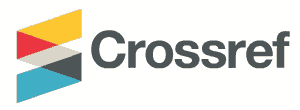An Implementation of Quasi-Newton Algorithm for Fast-charging Lithium-Ion Battery (LIB) Optimization in Electric Vehicle Application
DOI:
https://doi.org/10.62146/ijecbe.v2i2.54Keywords:
Quasi-Newton, Fast-charging, Lithium-Ion BatteryAbstract
Lithium-Ion Battery (LIB) is still an effective alternative technology in maximizing the efficiency of electric vehicles (EV). The application of EVs has had a significant impact in order to reduce the issue of global problems - reducing carbon gas emissions. The LIB charging mechanism with the fast-charging method is an alternative to the application of EVs on a more massive scale. However, the dynamics of the battery where the battery work function can decrease over time will affect battery performance. In addition, fast-charging efforts at LIB with maximum speed have the impact of increasing the risk of battery temperature and the existence of a larger gap in battery degradation. This paper proposes the application of Limited-Memory-Broyden-Fletcher-Goldfarb-ShannoBound Constrained (L-BFGS-B) algorithm for Lithium-Ion Battery (LIB) fast-charging optimization as an innovative solution approach in dealing with the complex LIB fastcharging dynamics. The results show that this approach is able to improve fast-charging speed and efficiency.
References
Carlos Vidal et al. “Machine Learning Applied to Electrified Vehicle Battery State of Charge and State of Health Estimation: State-of-the-Art”. In: IEEE Access 8 (2020), pp. 52796–52814. DOI: 10.1109/ACCESS.2020.2980961.
Adarsh Kumar et al. “A Novel Simulated-Annealing Based Electric Bus System Design, Simulation, and Analysis for Dehradun Smart City”. In: IEEE Access 8 (2020), pp. 89395–89424. DOI: 10.1109/ACCESS.2020.2990190.
Heba M. Abdullah, Adel Gastli, and Lazhar Ben-Brahim. “Reinforcement Learning Based EV Charging Management Systems–A Review”. In: IEEE Access 9 (2021), pp. 41506–41531. DOI: 10.1109/ACCESS.2021.3064354.
Zilin Zhang et al. “A Deep RL-Based Algorithm for Coordinated Charging of Electric Vehicles”. In: IEEE Transactions on Intelligent Transportation Systems 23.10 (2022), pp. 18774–18784. DOI: 10.1109/TITS.2022.3170000.
Zhongbao Wei et al. “Deep Deterministic Policy Gradient-DRL Enabled Multiphysics-Constrained Fast Charging of Lithium-Ion Battery”. In: IEEE Transactions on Industrial Electronics 69.3 (2022), pp. 2588–2598. DOI: 10.1109/TIE.2021.3070514.
Xinfan Lin et al. “An Electro-thermal Model for the A123 26650 LiFePO4 Battery”. In: (Apr. 2013).
Downloads
Published
How to Cite
Issue
Section
License
Copyright (c) 2024 International Journal of Electrical, Computer, and Biomedical Engineering

This work is licensed under a Creative Commons Attribution 4.0 International License.






